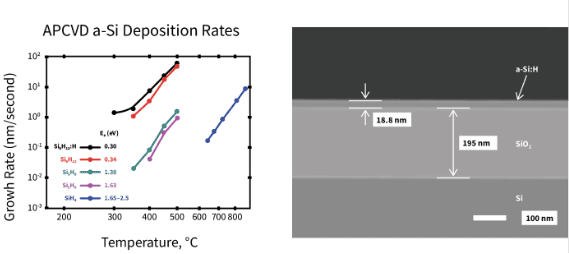Semiconductor Application™
The Coretec Group's Cyclohexasilane™
The Coretec Group’s Cyclohexasilane (CHS) liquid state and chemical structure contribute to enhanced deposition rates and lower deposition temperatures, especially in microelectronics applications including integrated circuitry, optoelectronics, MEMS, and memory.
More Efficient Processing
More efficient deposition at lower temperatures and higher rates
Higher Purities
Higher performance silicon and silicon-based layers
Long Shelf Life
Two year shelf life when stored at room temperature
Liquid Transport And Storage
Lower storage and transportation costs compared to gas
Incorporation
CHS can be easily incorporated into existing PECVD/CVD/ALD processes with minor equipment modifications
The Challenge
The Possibility
The Coretec Group’s Cyclohexasilane is a higher order silane (Si6H12 vs SiH4). This results in significant benefits to deposition temperature, rate, and efficiency with only minor modification to the standard gas delivery system, leading to cost savings and increased production rates. Coretec Cyclohexasilane is a liquid at ambient conditions and can be molecularly doped (B, P). This allows for solution processing of multi-layered devices with the performance of more traditionally fabricated silicon electronic devices and potential for lower cost roll-to-roll processing.
What Does This Mean?
 Example of using cylic versus linear silanes in aerosol assisted chemical vapor deposition (AA-CVD): higher deposition rate, lower deposition temperature, and absence of need for dilution during processing. Thin a-Si:H films are achieved readily from cyclic silane precursors using gas phase or liquid phase spin-coating based techniques.
Example of using cylic versus linear silanes in aerosol assisted chemical vapor deposition (AA-CVD): higher deposition rate, lower deposition temperature, and absence of need for dilution during processing. Thin a-Si:H films are achieved readily from cyclic silane precursors using gas phase or liquid phase spin-coating based techniques.
